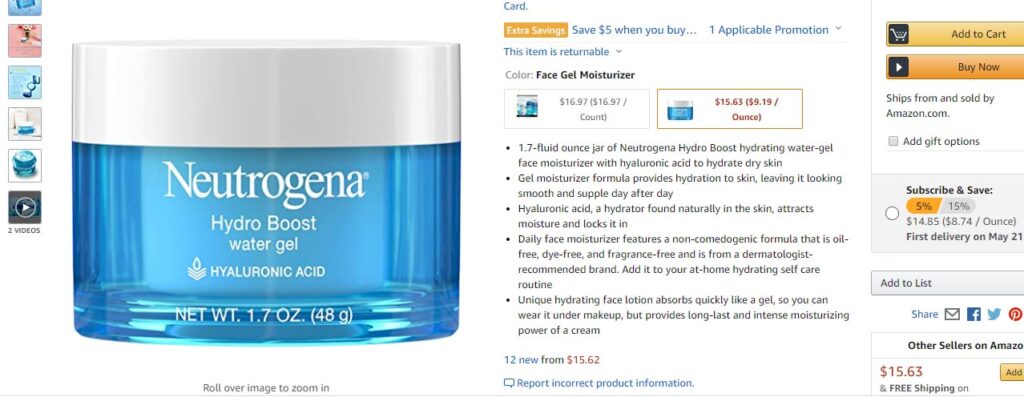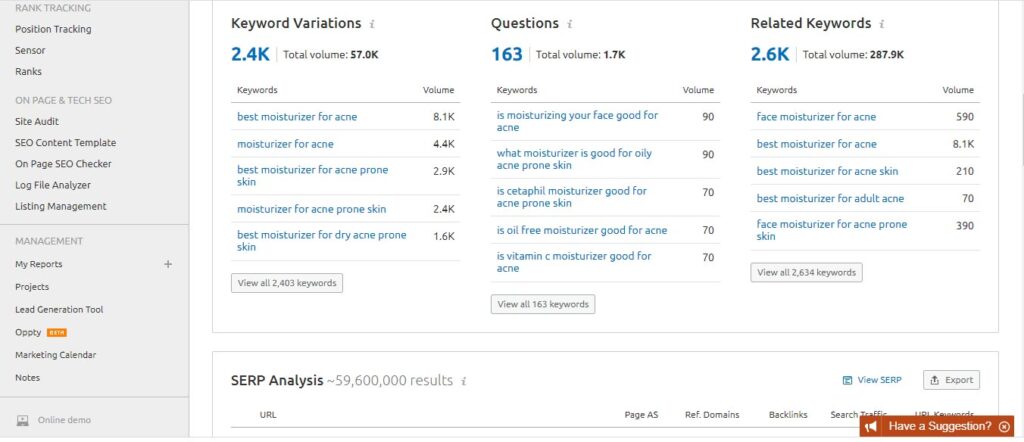How to Successfully Drive Organic Traffic to Your Online Store
If you own an online store, it’s not a surprise your website needs traffic so that people are looking at your products, which is essential to having customers buy items from you. But bringing users to a website isn’t an easy task, and you need to actively work for it. Investment in increasing the traffic to your eCommerce site will help your business, as the more visitors you have, the more products you sell.
You might be wondering where to start looking for more visitors. As an eCommerce website, you are targeting online shoppers, so it’s not effective to go to the entrance of the mall and put up a massive banner with your web address on it. Shoppers who go to the mall aren’t going to open their phones and shop online while hundreds of stores surround them. Any kind of eCommerce website is targeting people who shop online, and the online world is where your potential clients are.
SEO for eCommerce
The online world without search engines would be a city with no stoplights and directions. Search engines allow users to find information as well as online stores and websites. When users start searching for products online, they don’t type website addresses into their browsers. Rather, they type in a name or the type of product into the search engine.
There are around 5.5 billion searches on Google per day or over 63,000 searches per second, with an average person conducting 3-4 searches per day. Statistics also show that 39% of global eCommerce traffic comes from search.
Visitors that come to your website because of unpaid search results are the ones who belong to the category of organic traffic. Organic traffic is crucial for eCommerce as results from it are long-lasting, as opposed to paid advertising. By increasing visibility in search engines, you also increase the authority of a website and gain customers’ trust, which may increase your sales. Additionally, driving organic traffic to your site is completely free. With paid advertisement, you pay for the visits to your site, while organic traffic doesn’t cost you anything.
SEO is vital for your store. Most of your potential clients start their journey of purchasing products by visiting a search engine like Google. Users type keywords in the engine to find relevant search results, and that’s where you want to appear so that users click on your site. Google organizes pages in queries by different factors, and the first five results get most of the clicks. To rank better in relevant search queries, you need to optimize your site for search engines.
Keyword Research
Keyword research is an excellent start in increasing the traffic to your eCommerce website. To appear in relevant search results, first and foremost, you should know how your customers are searching for your products and what keywords they use. If you sell face moisturizers for acne-prone skin, you might name your categories and landing pages just like that: “moisturizer for acne-prone skin” – very simple. But unfortunately, you cannot just guess how people search for products. Believe it or not, many of your customers might not even use “acne-prone skin” in their queries, but search for “oil-free moisturizers,” “moisturizers that don’t make you break out,” “moisturizers for oily skin” etc. Knowing how your customers are searching for products online is the essence of a successful SEO strategy and will help you increase traffic as well as sales of your products.
But how do you know what keywords your potential customers use to search for products online? The first easy step you can take is by creating a list of keywords they may be using. But this is how you arbitrarily decide what words and phrases users type into Google to find you. There will be no evidence you are correct, and no eCommerce website should stop at this stage.
To get the idea of how people search for your products, let’s start by visiting Google because, most likely, that’s where they will go to find you. Type a keyword related to the product you are selling, such as “moisturizer for acne.” You will immediately see Google suggesting keywords. That’s because Google is trying to help you by using the available “search-recipes.” Google is a quite reasonable search engine, so these suggestions appear on your screen only because people have already searched for these products millions of times, and Google has collected the most popular queries related to your keyword.

Once you hit the search button, Google will also show you related queries.

Another fantastic place to visit for keyword ideas is the biggest eCommerce website in the world: Amazon. Just like Google, Amazon will start suggesting keywords and also because that’s how frequently users search for related products.

The results you get here are slightly different. You might not have remembered about including SPF, for instance. But as we see from the example, people are searching for moisturizers that are good for acne-prone skin and also protect skin from UVB rays. SPF is also important because direct sunlight can worsen acne, so people looking for acne products might be interested in SPF in their moisturizers – another great keyword idea if you sell such products.
And another excellent place to find keyword ideas is the description of the product that shows up in your search results on Amazon. In our case, we clicked on the first product that ranked in search. By looking at it, we can come up with keywords such as “hydrating water-gel moisturizer,” “oil-free moisturizer,” “fragrance-free moisturizer,” “dermatologist-recommended brand,” “self-care routine,” etc.

Now that you have a list of the keywords you want to target, it’s essential to see how each one of them can bring traffic to our site and possibly increase sales.
Analyzing Keywords
First of all, we need to mention that by length, there are two types of keywords: short-tail and long-tail keywords. “Moisturizer” is a short-tail keyword, while “moisturizer for acne-prone skin” is a long-tail keyword. A short-tail keyword is the one that consists of 1-2 words, while long-tail keyword includes 3-5 or more words in it. Short-tail keywords are more generic and may be used by visitors who are less likely to make a purchase. It’s not a fact and depends on the user, but someone typing “moisturizer” in a search engine is less likely to buy a product than someone who searches for “moisturizer for acne-prone skin with SPF.” Long-tail keywords are more specific and usually have more commercial intent. Someone searching for moisturizer can have millions of other reasons for the search, rather than finding a product to buy.
Secondly, we need to see how each keyword can bring traffic to your site and how difficult it is to rank for each of those. There are many great keywords tools available to use for keyword research, such as SEMRUSH or MOZ Keyword Explorer,

“Moisturizer for acne” analyzed by SEMRUSH.

Keyword analyzing tools like SEMRUSH can show you how much traffic a keyword brings and how difficult it is to rank for it. In the case of “moisturizer for acne,” you can see thousands are searching for it, but it’s extremely difficult to rank for it.

“Moisturizer for acne-prone skin” analyzed by MOZ Keyword Explorer. The keyword is less difficult and will bring traffic to your website.

On MOZ Keyword Explorer, you will also see keyword suggestions. The keyword we got from Amazon “moisturizer for acne-prone skin with SPF” doesn’t bring as much traffic as “best moisturizer for dry acne-prone skin.” Keyword suggestions are a great tool as they can show you even better options for keywords than you originally thought of.
Higher search volume doesn’t necessarily mean a keyword is better for your eCommerce website. High competition makes it more difficult to rank for these keywords, and you might end up competing with the biggest players in the field, such as Amazon. If you are just launching your website, it’s wise to target keywords that bring traffic, but is less competitive than “moisturizer for acne.” Although you will still target keywords with high search volume, you shouldn’t expect to get more customers by just targeting those, as it will take you a very long time to compete with giant eCommerce websites.
A Blog for Your eCommerce Website
A blog allows you to have more content. More content means more keywords, and the more keywords you have, the more often you can appear in search results. Appearing in relevant searches will increase traffic to your website. Besides, having high-quality content in your blog articles increases your chance of getting backlinks from other websites, which will increase your website authority and improve your SEO.
A blog for eCommerce is also crucial because it allows you to demonstrate your knowledge in the field and increase the trust of potential customers. Blog articles will also help establish relationships with your customers. If you write about tips to decrease inflammation caused by acne, without trying to sell your products, you’ll help your readers. Those who read articles may not purchase anything after reading the blog, but they may continue coming back to your site to find solutions. Eventually, they may get interested in your products.
If you allow readers to comment on your posts, it will help you understand them better and see what they like or dislike about the content you create. By allowing comments, you will also engage your potential customers, and they’ll feel like part of a bigger experience.
Additionally, the blog is a free marketing tool. Writing blog posts needs an investment of time and energy, but publishing articles is free, and the traffic to your posts is free. Blog articles also allow users to share your content with their social media pages, which will increase exposure and traffic to your site.
Make Your eCommerce Website Fast
It doesn’t matter how much effort you put in your keyword research or blog articles; if your website is slow, you will increase the risk of users abandoning a website without reading your content and making a purchase. Page Speed is amongst ranking factors for Google, and your ranking will also drop because of slow loading times. 53% of mobile users abandon websites that take longer than 3 seconds to load and 95% of mobile users will be more likely to come back to a fast website. Increasing page speed will help your online visibility and decrease the chances of users leaving a website without interacting with it, so it’s an essential factor to keep in mind.
If you want to check your site speed, click here to use PageSpeed Insights from Google. The tool will check your eCommerce website speed and give recommendations to improve it
Get Help If You Need It
The experts at Internet Marketing Geeks have been building, optimizing and marketing eCommerce stores for over a decade. If you need help making your online store a success, we would love to chat!

